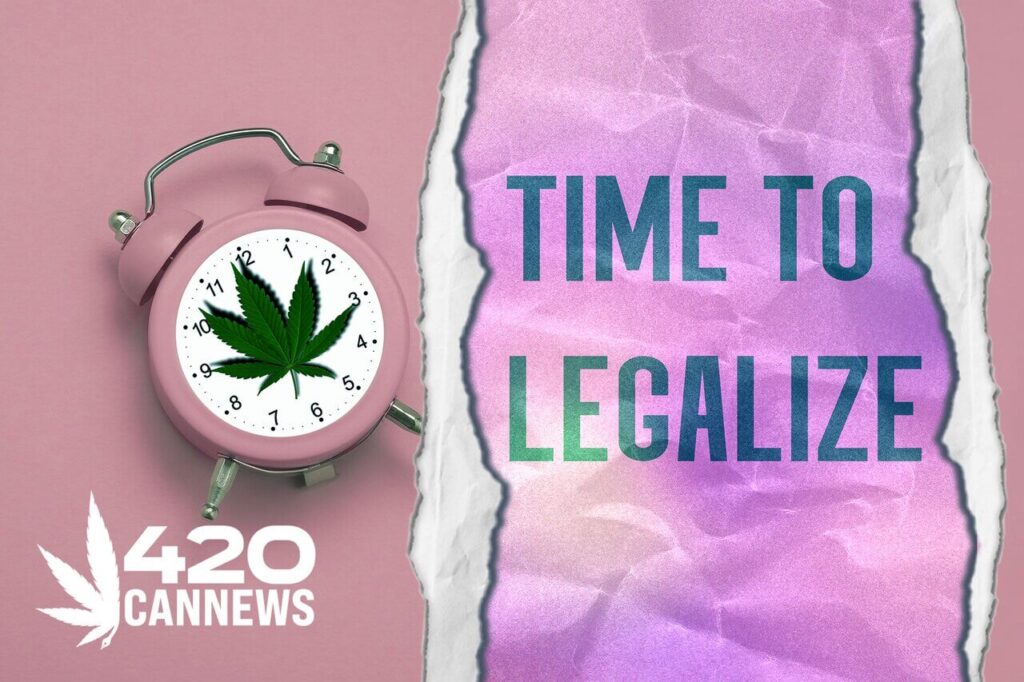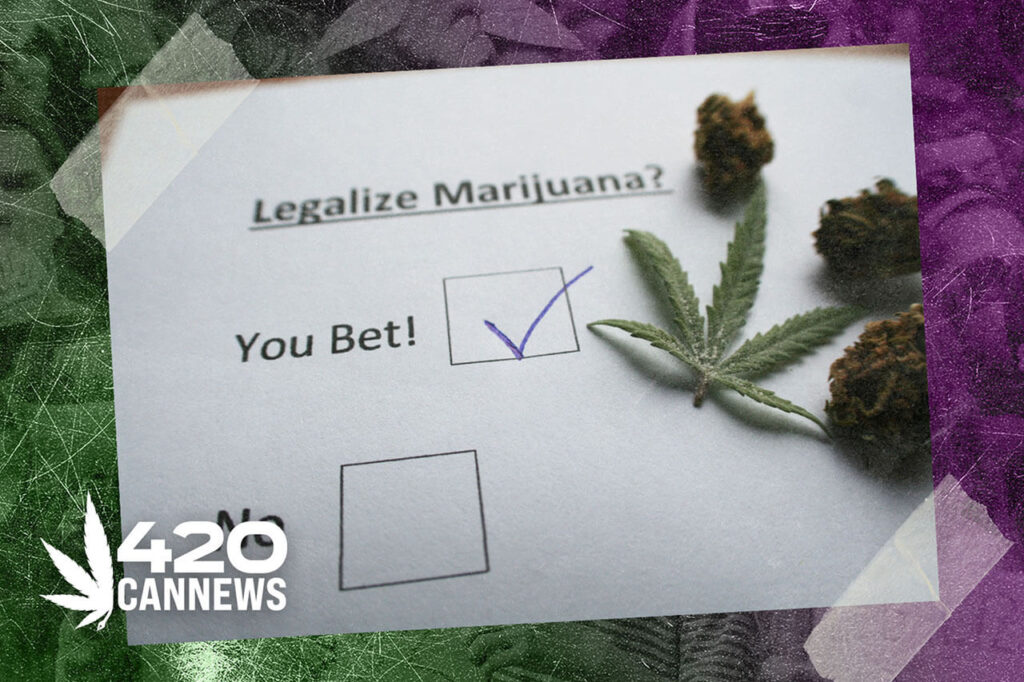JACKSONVILLE BEACH, Fla.(420CanNews) — Remember when potheads had to play ninja to avoid getting caught by the cops or a nosy neighbor? It’s crazy to think that was not too long ago. And it’s easy to think that the days of stigma are gone–especially in states that have legalized medical and recreational marijuana.
That said, things have changed. For so long, people were quick to judge without genuinely understanding the health and wellness potential of cannabis. But thankfully, times are changing. The rise cannabis movement is finally removing the dark cloud surrounding this beloved plant for far too long.
The story of marijuana’s demonization and subsequent struggle toward acceptance in the United States is a tale of social, political, and racial dynamics punctuated by influential laws and regulations. It is a history intertwined with xenophobia, misinformation, consumer protection, and the influence of parents’ movements and stricter sentencing laws.
The old saying goes, “History never repeats; it rhymes.”
A Blunt Start
Marijuana prohibition began in the early 20th century, with Brazil, South Africa, and Greece among the first nations to criminalize cannabis.
At the same time, thousands of Mexican immigrants were crossing the border into the United States, bringing their customs, culture, and a little plant called cannabis. The predominantly white majority started to freak out as the plant gained popularity. Quickly, the general public began associating cannabis with crime, violence, and even the “corruption” of white women.
State by state, prohibition began to rear its ugly head, starting with Massachusetts in 1911. Racism and xenophobia paved the way for a nationwide ban as the country braced itself for an all-out drug war.
Dark Ages
Harry J. Anslinger and William Randolph Hearst were the chief architects of marijuana prohibition in the 1930s. Anslinger, the head honcho of the Federal Bureau of Narcotics, was hell-bent on enforcing harsh penalties for drug possession cases.
The discrimination associated with marijuana prohibition in the 1930s was primarily targeted at two groups: racial minorities and immigrants. Anslinger and Hearst utilized racially charged narratives and stereotypes to fuel their anti-marijuana campaign. They associated marijuana with racial and ethnic groups already facing discrimination and prejudice, particularly Mexican immigrants and African Americans.
Anslinger and Hearst capitalized on existing prejudices and racial tensions to stigmatize marijuana use. They portrayed cannabis as a dangerous substance that allegedly caused violent and criminal behavior, specifically targeting racial and ethnic communities. By connecting marijuana to these marginalized groups, they further perpetuate negative stereotypes and create a climate of fear and suspicion.
The War on Drugs Gets Personal
The implementation of anti-cannabis laws in South Africa in 1911 and the subsequent tightening of those regulations in 1922 were driven by racist sentiments, colonial misunderstandings, and political motivations. Cannabis, or “dagga” as it’s locally known, was associated with indigenous cultural practices, often viewed negatively by colonial officials.
This negative view contributed to the confusion around cannabis and its cultural significance among the colonial rulers. The different perspectives on cannabis lawmaking existed among the colonies, with debates centering around its regulation and prohibition. Concerns over dagga were regionally specific and ranged from its impact on agricultural labor and crime to its role in cultural practices. The inclusion of cannabis in the national anti-opium legislation was influenced by how dagga was treated in opium laws and international pressure.
The prohibition was further influenced by racist panics and political motivations, with the law resting on the principle of racial segregation. This racial and class-based targeting of substance prohibitions is not unique to South Africa, as similar dynamics can be observed in the United States post-Reconstruction South.
The Early Regulations
The Harrison Act of 1914 began the United States’ journey to regulate drug consumption. This legislation aimed to address drug addiction and maintain international credibility, regulating substances such as opium, cocaine, and cannabis while excluding marijuana due to its perceived non-addictive nature. Despite the Act’s initial intentions for orderly marketing, it was enforced as a prohibition law, leading to increased penalties in 1922. However, its impacts were short-lived as drug usage re-emerged in later years, signaling a recurrent pattern of drug prohibition laws’ inefficacy.
Paving the Way for Prohibition
Following the Harrison Act, the Marijuana Tax Act of 1937 was a landmark legislation that effectively criminalized cannabis. This Act imposed high transfer taxes, marking a significant milestone in the federal government’s concerted efforts to outlaw cannabis.
Historical narratives suggest that the prohibition was driven, in part, by a blend of xenophobia, misinformation, and racially biased fear-mongering. Despite its non-addictive nature, marijuana was entangled in the broad sweep of narcotics regulation.
The Case for Legalizing Cannabis-Based on Racial Justice
It is simple to draw a connection between cannabis and racial and justice issues. Despite equal use rates among whites and non-whites, arrests for cannabis-related offenses are far more common among people of color. Black Americans are 3.64 times more likely than white Americans to be jailed for a cannabis-related offense.
According to the ACLU, among states that legalized cannabis by 2018, Black Americans were 2.2 times more likely to be arrested for cannabis in 2010, and that number only decreased to 1.72 times in 2018. However, legalization significantly reduces the magnitude of cannabis arrests, while racial disparities in cannabis enforcement are still present. Cannabis law enforcement was intentionally racialized. Racism and the government’s targeting of outgroups became the basis of the entire War on Drugs.
Given that the purpose of cannabis policy in the United States has been to hurt communities of color for millennia, it has been a tremendously successful policy venture. But because so many Americans and people on both sides of the political spectrum understand drug policy in general and cannabis policy in particular for what it is, there has been a long-standing movement to abandon drug prohibition and criminalization and discover alternative policy paths. This action often focused on cannabis reform in today’s policy discussions.
Upping the Ante
The Boggs Act of 1951 significantly escalated the war on weed. It introduced mandatory sentences for drug convictions, including marijuana possession, effectively amending the Narcotic Drugs Import and Export Act. The sentences were brutal: minimums of two to ten years for first-time offenders and fines of up to $20,000.
This Act also merged marijuana and narcotics into one category for the first time, making no distinction between users and dealers. It was marked by adopting a punitive, prohibitionist stance that had profound implications for the U.S. legal system. This legislation resulted in an exponential increase in drug-related arrests and significantly burdened the criminal justice system.
A Toke of Hope
More and more people are exploring the countless benefits of this magical plant and breaking down barriers that once kept weed use in the shadows. It’s not just about getting high anymore; marijuana is also about healing bodies, minds, and communities with every puff, brownie, and oil drop.
A long-standing conflict between the state and the stigma behind the rise cannabis movement, misinformation, and unintended consequences mark the legal history of the war on weed.

Despite the gradual liberalizing sentiment towards marijuana, reflected in the increasing number of states pushing for the rise cannabis movement for medical and recreational use, the conflict continues. Comprehensive research and understanding of the historical context are crucial in shaping a more equitable and informed approach to marijuana federal legalization. The war on weed, while changing in nature, is still far from over.
For more updates on cannabis legalization laws, subscribe to 420CanNews today and be in the loop. It not only covers the legalization process but so much more!
— Story Filed By 420CanNews Staff
Here’s More Information on the Topic:
Pondering Pot: Marijuana’s History and the Future of the War on Drugs
https://www.oah.org/tah/august-2/pondering-pot/
The Marijuana Prohibition Movement
https://weedmaps.com/learn/cannabis-and-its-evolution/the-prohibition-movement
When, Why, and How Did Cannabis Become Illegal?
https://www.cannaconnection.com/blog/7276-when-why-how-become-illegal


